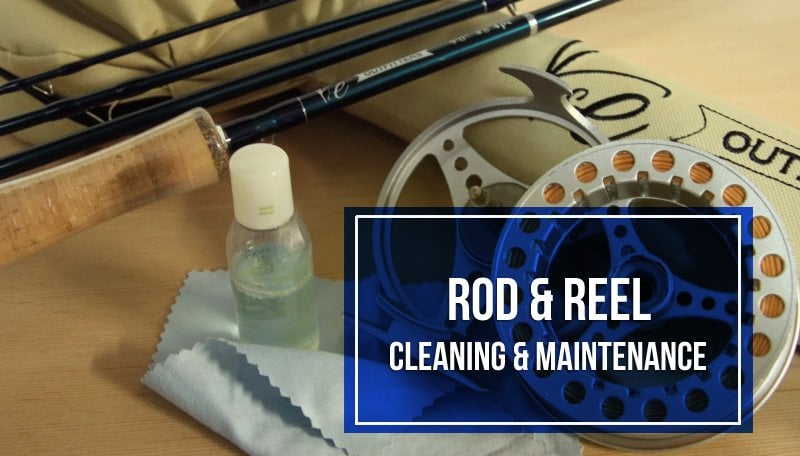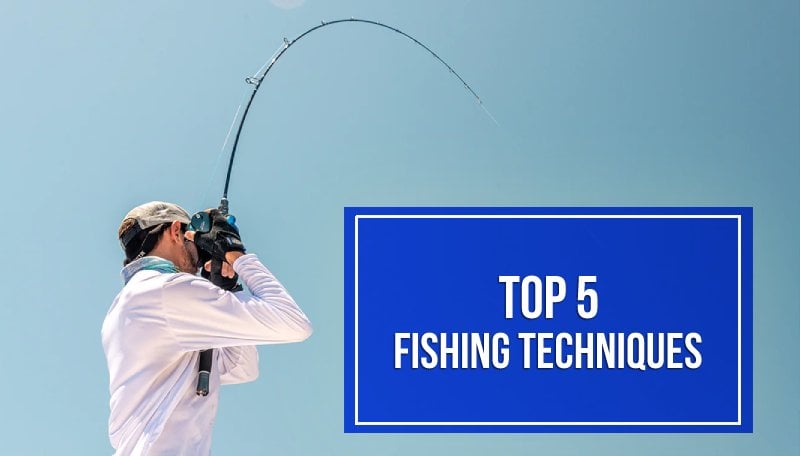Last Updated on
Many anglers have a pretty impressive collection of fishing rods, reels, and other things. So how do they make them last? The answer is simple – they maintain their equipment. With proper care, not only will your fishing gear last longer, but you’ll also save some hard-earned cash by not having to replace the damaged stuff. Instead, you can put those savings toward some cool upgrades. In this post, we’re gonna show you the ins and outs of taking care of your fishing rod so it stays in awesome condition for many of your future adventures. Let’s jump right in!
Table of Contents
Cleaning Your Fishing Rod
Storing Your Fishing Rod
How to Make Your Fishing Rod Last
How to Clean Your Fishing Rod
Cleaning is no fun, but, you know, if you want to dance, you must pay the fiddler. It’s something that just must be done for an extended lifespan, improved performance, prevention of corrosion, and good appearance. It’s not as daunting as it sounds, and once you get the hang of it, you’ll be doing it fast. So here’s what you need to do:
- Clean your saltwater rod after every trip: If you’re into saltwater fishing, make sure you give your rod a good rinse after EACH trip. Salt can be pretty harsh on your gear, so a quick wash with fresh water will prevent corrosion and keep it in top shape for the next time. In contrast, the rod you use to fish freshwater doesn’t require cleaning more than once every four trips.
- Always clean the guides: Guides are those little loops that hold the line, and they always get dirty from all sorts of gunk. If you let it develop, it can lead to a broken line and the loss of your favorite lure. To keep the guides clean and your line running smoothly, use a Q-tip and a soft brush to remove any build-up gently.
- Remember to clean the reel: After removing it from the rod, spray it with fresh water and give it a good wipe-down with a soft cloth. You can also use your old toothbrush to remove particles from hard-to-reach nooks.
- Don’t use damaging materials: When cleaning your gear, stick to safe stuff like an old toothbrush, mild soap, and a clean rag. Avoid harsh chemicals or abrasive materials. And if you want to go the extra mile, consider getting a reel cleaning and lubrication kit.
- Dry the rod and reel thoroughly: After washing your fishing rod and cleaning the reel, ensure they’re completely dry before storing them. Moisture can cause rust, so take the time to dry everything off with a clean, dry cloth.
How to Store Your Fishing Rod
In the last tip on fishing rod cleaning, we’ve mentioned another essential aspect of rod care – proper storage. Yep, caring for your gear isn’t just about keeping it clean; it’s also about storing it the right way to ensure it stays in great shape between fishing trips. So here are our tips for proper fishing rod storage.
- Store in a dry place: Always store your rod in a dry, cool area. Sooner or later, moisture will cause corrosion to your gear, particularly the guides, reel, and reel seat. So keeping it away from damp and humid areas is crucial for longevity.
- Keep away from heat: Excessive heat can weaken or warp your fishing rod, so make sure you keep it away from direct sunlight, heaters, or other heat sources to prevent any potential damage. If you have a habit of keeping your fishing gear in a car, it’s time to break it because cars can get very hot under the sun.
- Use rod cases or sleeves: Investing in a protective rod case or even a simple sleeve is smart. These provide added protection against scratches, dings, and dust. Make sure your case or sleeve fits the rod size to avoid your rod bending under pressure.
- Store vertically: Storing your rod vertically helps maintain its natural shape and prevents it from becoming permanently curved. Get yourself a wall-mounted rack or a rod stand, or build a DIY solution of your own.
- Loosen the drag: Before putting your fishing reel away, remember to loosen the drag, as it helps relieve tension on the internal components.
How to Make Your Fishing Rod Last
To wrap it up, let’s talk about how to make sure your rod endures countless fishing trips:
- Don’t skip cleaning: Give your rod a good wash with mild soap and water, paying extra attention to the guides and reel.
- Store properly: Proper storage is key to maintaining your rod’s condition. Keep it in a cool, dry place away from direct sunlight or heat sources. And don’t forget to use a protective case or sleeve and store it vertically to maintain its natural shape.
- Service the reel annually: Consider servicing your reel at least once a year, either by taking it to a professional or doing it yourself. It includes cleaning, lubricating, and inspecting it for wear and damage.
- Don’t knock and bump your rod: Treat your fishing rod with care and avoid knocking it against hard surfaces or bumping it into objects – these seemingly minor incidents can cause cracks.
- Wax the rod’s joints: To keep your rod’s joints in tip-top shape, apply a thin layer of wax every few months. It helps maintain a snug fit between the sections and prevents the dreaded “stuck ferrule” issue.
Conclusion
So, we’ve covered a bunch of tips on how to keep your fishing rod in great shape. Trust us, it’s not rocket science – just a few simple steps can make all the difference. So, show a little love to your gear, and it’ll return the favor.
Check out our other articles on fishing:
- Types of Fishing Reels: A Complete Guide
- Most Common Types of Fishing Techniques
- How to Select the Right Fishing Rod Length
- How to Choose the Best Ultralight Fishing Rods
- Fly Fishing Etiquette: Do’s and Don’ts on the Water
FAQ
How do I clean my fishing rod?
To clean your fishing rod, disassemble it and use a damp cloth with mild soap to wipe it down. Clean the guides with a small brush, rinse gently with fresh water, and dry thoroughly before reassembling.
How do I store my fishing rod?
Store your fishing rod in a protective case or sleeve, in a cool, dry place away from direct sunlight and heat sources.
If I own a saltwater rod and reel with corrosion-resistant components, should I clean them every trip?
Yes, even if your saltwater rod and reel have corrosion-resistant components, it’s essential to clean them because rust isn’t the only problem. For example, the salt buildup in the guides can cause a broken line.











